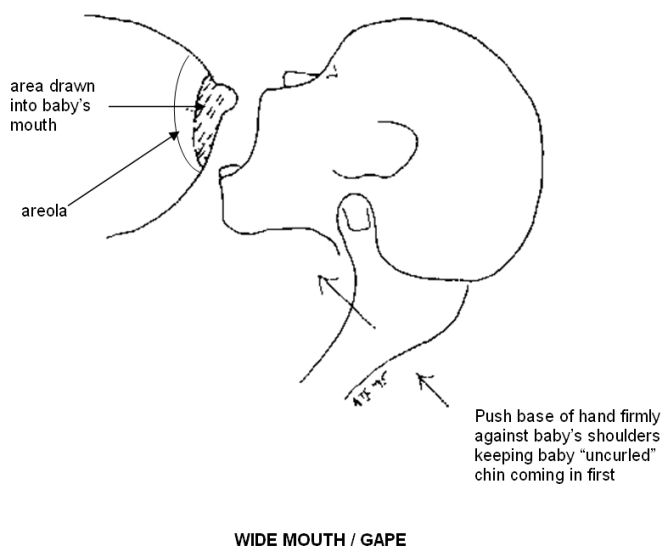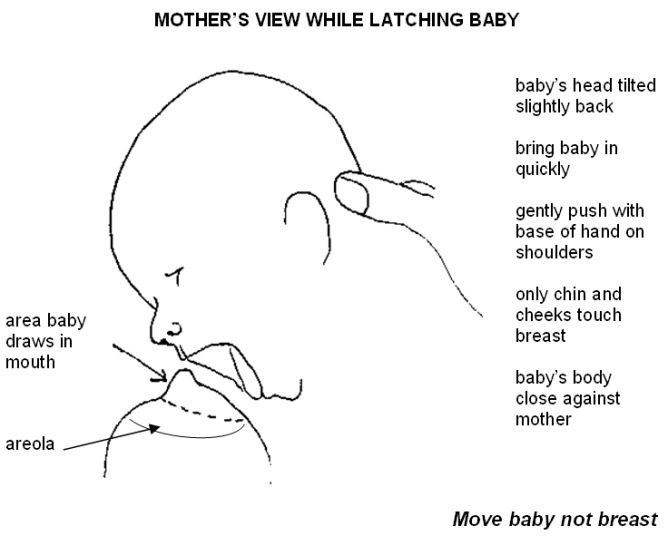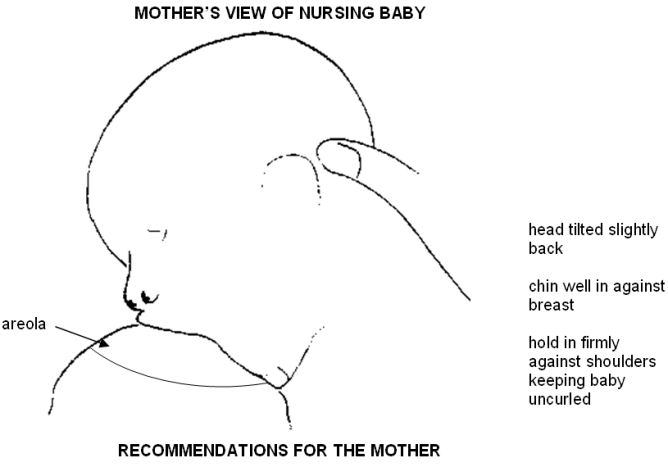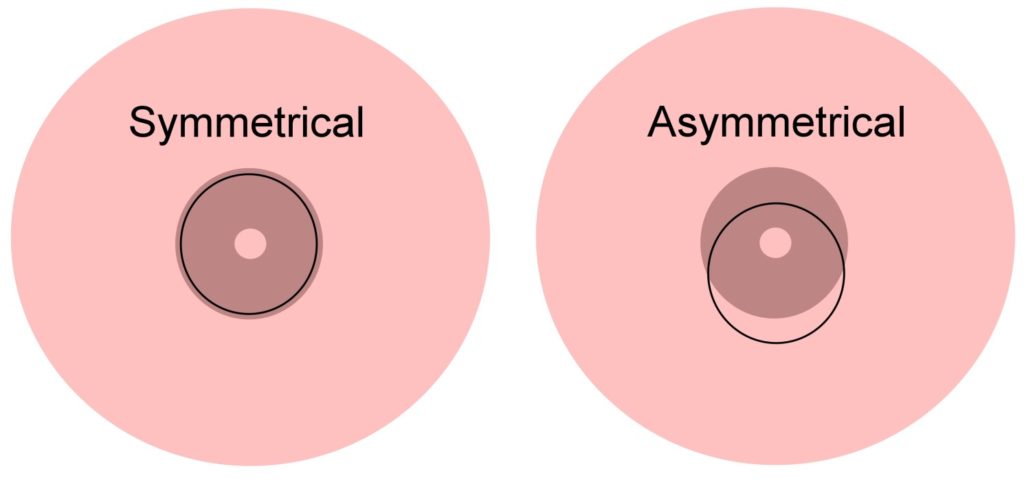What does it mean to use an asymmetrical latch? Position your baby’s mouth off-center of the nipple and areaola as shown below.
Open Wide!
Before we begin, we must first teach baby to open wide or gape. Baby needs to have his or her mouth open wide BEFORE baby is moved onto breast.
- Avoid placing baby down in a feeding position until you are completely ready to latch baby. The longer baby waits while you get ready (undoing your bra, etc), the more frustrated baby gets, and the less open baby’s mouth will go.
- move baby toward breast, touch top lip against nipple
- move mouth away SLIGHTLY
- touch top lip against nipple again, move away again
- repeat until baby opens wide and has tongue forward
- Or, better yet, run nipple along the baby’s upper lip, from one corner to the other, lightly, until baby opens wide
How To: Asymmetrical Latch – Step 1
- Note wide mouth of baby
- Shaded area indicates part of areola to be drawn into baby’s mouth
- The base of the mother’s hand pushes firmly against baby’s shoulders, keeping baby’s neck uncurled and head tilted back
- Chin touches areola first
- Image shown using Cross Cradle Position for Left Breast

How To: Asymmetrical Latch – Step 2
- Move baby to your breast; do not move breast to baby
- Baby’s body should be close against mother (hips and shoulders facing mother’s body)
- Baby’s chin and cheeks touch breast
- Baby’s head is tilted slightly back
- Bring baby in quickly after wide mouth/gape
- Use base of hand on baby’s shoulders to gently pushy baby onto breast

How To: Asymmetrical Latch – Step 3
- Head tilted back slightly
- Chin well in against breast
- Hold baby firmly against shoulders, keeping baby uncurled

Positioning
Mother’s Posture
- Sit with straight, well-supported back
- Trunk facing forwards, lap flat
Baby’s Position Before Feed Begins
- Nipple points to the baby’s upper lip or nostril
Baby’s Body
- Placed not quite tummy to tummy, but so that baby comes up to breast from below and baby’s eyes make contact with mother’s Support Breast
- Firm inner breast tissue by raising breast slightly with fingers placed flat on chest wall and thumb pointing up (Large, pendulous breasts, try using rolled-up burp cloth, or cloth diaper under breast, for added support.)
Move Baby Quickly On To Breast
- Head tilted back slightly, pushing in across shoulders so chin and lower jaw make contact (not nose) while mouth still wide open, keep baby uncurled (means tongue nearer breast) lower lip is aimed as far from nipple as possible, so baby’s tongue draws in maximum amount of breast tissue
Cautions
Mother needs to AVOID
- pushing her breast across her body
- chasing the baby with her breast
- flapping the breast up and down
- holding breast with scissor grip
- not supporting breast
- twisting her body towards the baby instead of slightly away
- aiming nipple to centre of baby’s mouth
- pulling baby’s chin down to open mouth
- flexing baby’s head when bringing to breast
- moving breast into baby’s mouth instead of bringing baby to breast
- moving baby onto breast without a proper gape
- not moving baby onto breast quickly enough at height of gape
- having baby’s nose touch breast and not the chin
- holding breast away from baby’s nose (not necessary if the baby is well latched on, as the nose will be away from the breast anyway)
- Also see videos of latching and latching in other positions
Videos
How to Breastfeed – Deep Latch Technique
How To: Asymmetrical Latch Video by Dr Jack Newman
Lactation Consultation
The early days and weeks are of paramount importance to building the foundation of your breastfeeding relationship. It is important to perfect the latch as soon as possible, so you do not experience pain while nursing. For one-on-one support in your own home or in my office, please schedule an appointment.


